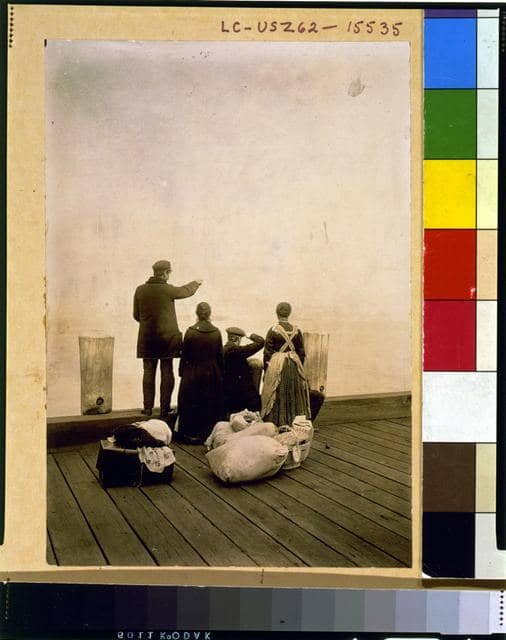
Target Students: 10th grade
Historical thinking skills: Corroboration and close reading
Guiding question: How did Americans react to the immigrants at the turn of the century?
Background: The 10th graders have started a unit on the Progressives at the turn of the century. To start this unit, I gave a lecture setting up a framework for the students to be thinking about but also gave them some background information about the era. In specific relation to the issue of immigration, we talked about the rise in immigrants to the country between the years of 1880 and 1920. We briefly touched on the hardships many immigrants faced upon arriving in the country but I wanted to give the students a chance to see if from the American’s perspective and the Progressive perspective. I would also hope to tie this lesson to conversations currently happening in the country around immigration, but for this lesson probably not beyond picking out the similarities.
Primary source sets:
“Mother of Exiles”
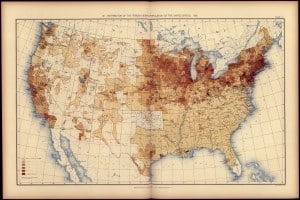

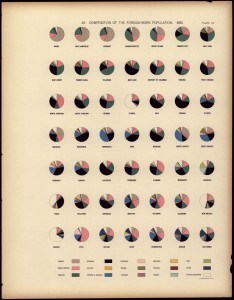
These three documents will be used to give the students an idea of the spread of immigrants in the country. The two maps above will show them where the immigrants are moving within the country as well as how many immigrants there are compared to the American born citizens in the areas they are moving. The last image will be used to give the students an idea of the makeup of the immigrant population in each state. I obtained these images from a larger document detailing statistical data for the country based on the 11th census; it was compiled by Henry Gannett and published in 1898. There are many other maps and data sets so others could be picked to best suit your class.
Scaffolding questions: What information are you picking out of these documents? What is the content in each document? What state has the most x immigrants? How might these immigration numbers have affected the country? Economically? Socially? Politically?
“Huddled masses yearning to be free”
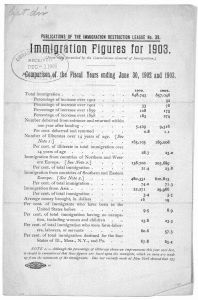
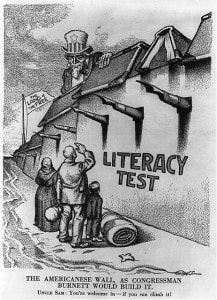
These two documents show two different viewpoints that I want the students to begin to corroborate. The Immigration numbers document (there are 4 other pages) from the Immigration Restriction League shows the side of Americans who do not wish the immigrants to be there. In the commentary of the document (page 2) the author talks about their belief that the immigrants are mostly illiterate and those that claim to be literate are lying. This contrasts with the political cartoon which seems to be against using literacy as a standard for citizenship. They were created several years apart but I believe the students can still obtain good data from them and, at the very least, think about the change and continuity happening between the documents.
Scaffolding questions: When were these documents made? What is the purpose of the documents? Who were the intended audience? Who made them? What is the content within the documents?
Digging deeper questions: What do these documents tell us about the context of the time? What progressive values do you think might be at play here? Use evidence within the documents. What claims does the author make and how does the author attempt to get their point across? Use specific examples.
“Send these, the homeless, the tempest-tost to me”


Again, these two documents show different reactions to the immigrants coming in to the country and they are from different years within the Progressive era but it is clear by this point that the feelings against immigrants continue into the later part of the era and that positive feelings toward the immigrants started earlier on. The first document is a song that the students should listen to (the song can be found here and lyrics can be found here). It’s opinion is quite obvious. The second document, the picture, can be a little less obvious. Point out to the students that the children are immigrant children and remind them of who Lewis Hine was and the types of things he stood for. Much of the intention of this photograph can be found in the origin.
Scaffolding questions: When were these documents made? What is the purpose of the documents? Who were the intended audience? Who made the documents? What is the content?
Digging deeper questions: What do these documents tell us about the context of the time? Thinking of these two documents, what sort of values might Americans hold? What claims does the author make and how do they get them across? Look at the photo of the children: why educate the children of immigrants? How does this idea differ from the one put forth in the song.
Final questions: I life my lamp beside the golden door
Thinking about all of the documents, what sort of idea or story are you pulling together? Do the documents agree or disagree? Why? What were Americans thinking and feeling about the immigrants? Has it changed all that much today? What’s changed and what’s stayed the same? What document gives you the clearest picture of Americans feelings towards immigrants? Why? Which document shows most clearly the prevailing Progressive values of the time? Why?
Summary and reflection: The scaffolding questions help to set the stage and get the students in the mindset of the time instead of in their own modern time. This is essential to being able to do a close reading of the document. The digging deeper questions ask the students to begin probing the document for more information and to read between the lines for what the document isn’t saying out right. As they begin to gather more information from the documents and create a more complex picture, I ask them to begin corroborating the documents. With a strong base understanding of them, the students can begin to pick out contradicting claims, various bias, and then make their own judgments that will help them answer the guiding question. As they begin to make their own claims, I will question them further to pull evidence from the documents and explain why they think the way they are thinking.
This assignment has been fun for me to create, though time consuming. Being able to dig through various documents to find the ones I wanted to present to my students was enjoyable and thought provoking for me. I’d be eager to see how the students tie this to the immigration debate today given; as I was looking at these documents I noticed a lot of similarities and I imagine the students might as well.
The struggle in my current classroom is understanding the nuances of historical thinking, specifically the values and limitations. Many of them, when asked, say that the limitation of a document is that it doesn’t give the other side of the story or is biased (which is true and not true). I picked these documents from opposing sides with the goal of getting them to recognize what that bias really looks like in a document. Then also to begin to pull apart the nuance of the limitations of documents. Let it be said, this is something I’m going to have to continue to work on.
Source links (in order of appearance):
Four Immigrants Picture http://www.loc.gov/pictures/item/97501668/
Foreign born distribution across America http://www.loc.gov/resource/g3701gm.gct00010/?sp=30
Foreign born distribution to Aggregate population in America http://www.loc.gov/resource/g3701gm.gct00010/?sp=31
Foreign born composition with the States http://www.loc.gov/resource/g3701gm.gct00010/?sp=36
Immigration numbers for 1903 http://memory.loc.gov/cgi-bin/query/h?ammem/rbpebib:@field(NUMBER+@band(rbpe+07902500))
The Americanese Wall http://loc.gov/pictures/item/2006681433/
Don’t bite the hand that’s feeding you http://www.loc.gov/item/00694050/
Lyrics to Don’t bite the hand that’s feeding you http://www.firstworldwar.com/audio/dontbitethehand.htm
Immigration children in school http://loc.gov/pictures/item/ncl2004000723/PP/
